































DevOps security marries development, operations, and security to remove the barriers between software developers and IT operations. Doing so ensures the code runs scales and operates reliably across the organization. While DevOps supports rapid updates, there might be reliance on vulnerabilities from third-party components. Development and IT can reduce flaws and adapt new features earlier while fostering teamwork, making software integration more secure.
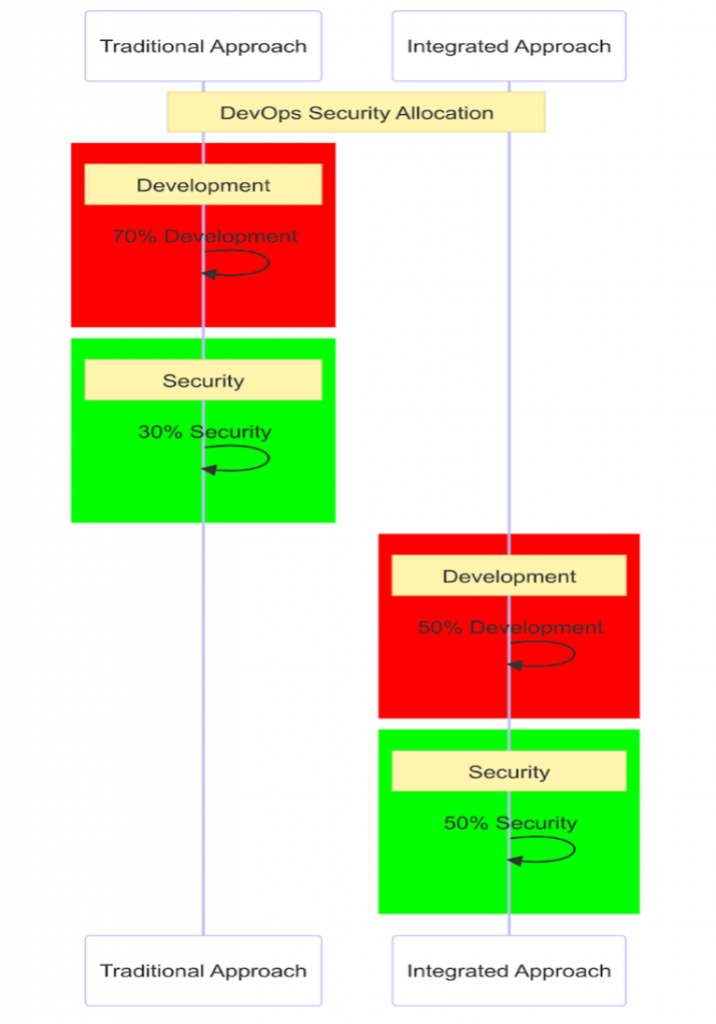
Traditional vs. Integrated Approach: The conventional model prioritizes development with late security assessments, often leading to costly fixes. The integrated approach embeds security throughout the lifecycle, enabling early vulnerability detection and efficient deployment.
Automation tools ease security in the DevOps process by automating routine activities such as code scanning, threat detection, and compliance checking. The tools run continuously to highlight early-stage vulnerabilities and mitigate risks before they become critical.
With the CI/CD pipeline, static and dynamic code analyzers can scan each line of code for vulnerabilities before deployment. This further tightens the security posture and increases efficiency, helping developers spend more time building features rather than finding flaws. Automated compliance checks also save time because they reduce human error and delays in keeping pace with industry standards.
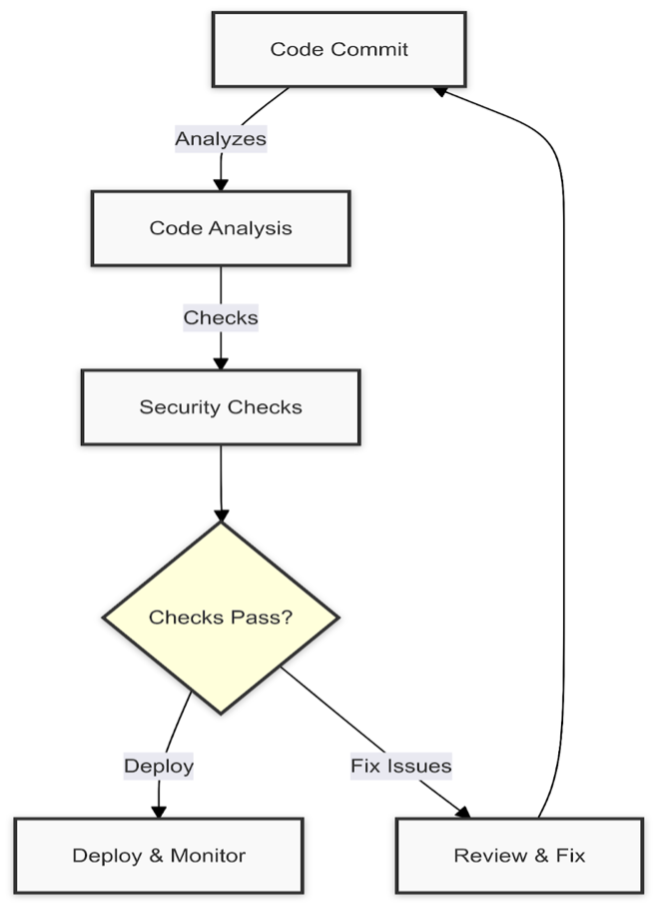
Automated Security Pipeline in DevOps: This cyclical process-from code commitment through security checks to deployment-ensures rapid and secure software delivery.
Security needs to be part of the DevOps workflow if agility and reliability are to last. Adding it late doesn't cut it in a Continuous Integration/Continuous Deployment landscape. Security as Code, Pre-configured Security Templates, and Policy as Code-this are but a few strategies that put security right into the DevOps pipeline.
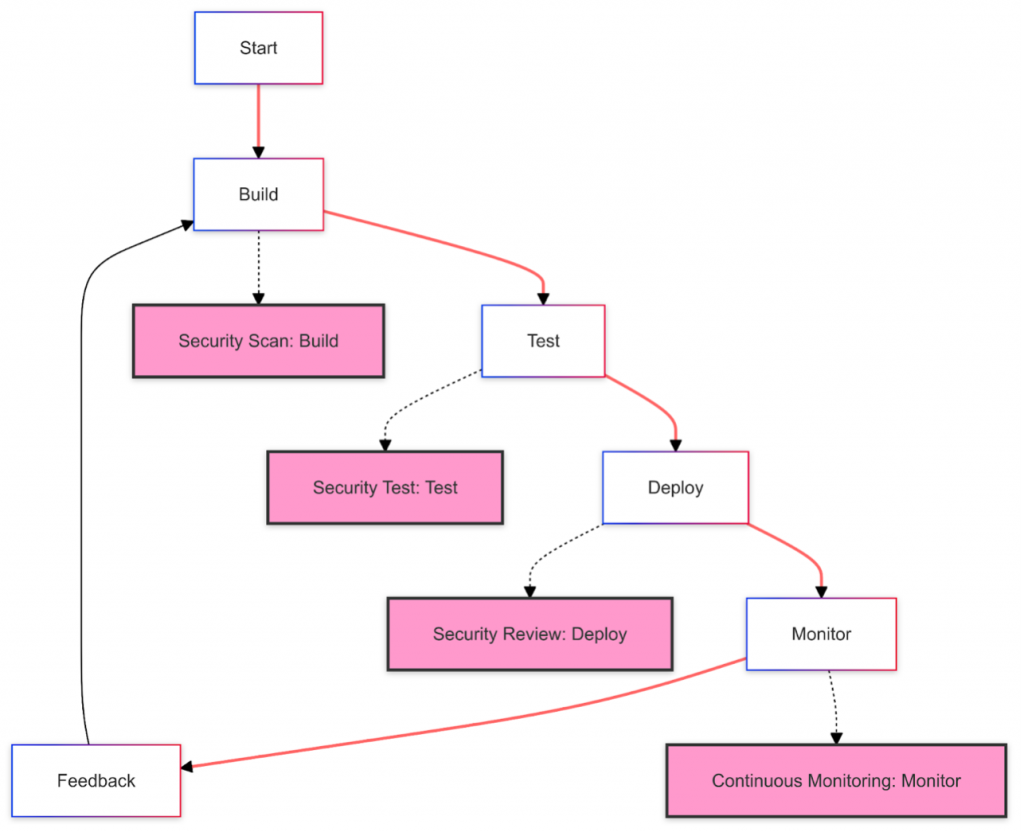
Security Integration in the DevOps Pipeline: This approach ensures continuous protection and compliance from build to monitoring.
Some of the essential practices that can help in securing data in SaaS platforms include the following:
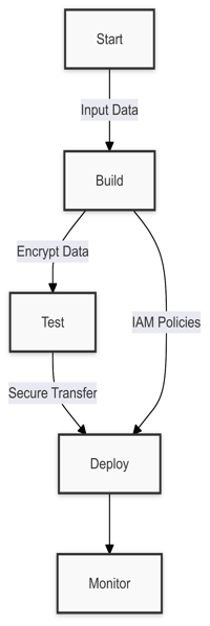
Data Defense in DevOps: Key measures like encryption and access controls are embedded in the DevOps pipeline.
Compliance needs to keep pace with updates in regulations and technologies. With DevOps, this is allowed by automation: Continuous compliance checks should be baked into developing and deploying a product or service. Automated tools can perform real-time code reviews and security audits, thus enabling compliance detection immediately. Continuous monitoring keeps compliance alive in production, using alerts on deviations.
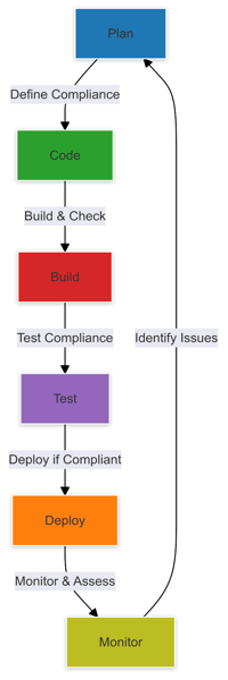
Continuous Compliance in DevOps: This integration streamlines adherence to regulations and embeds compliance as a continuous practice.
Adopting security first is no longer a nicety but an imperative one that equips developers with greater integrity in their solution development. This proactive approach to DevOps pipeline embedding through continuous compliance checks, encryption, and access controls sensitizes data from myriad breach origins. Because of these strategies, innovation by teams is empowered, making digital solutions truly efficient, scalable, and secure.
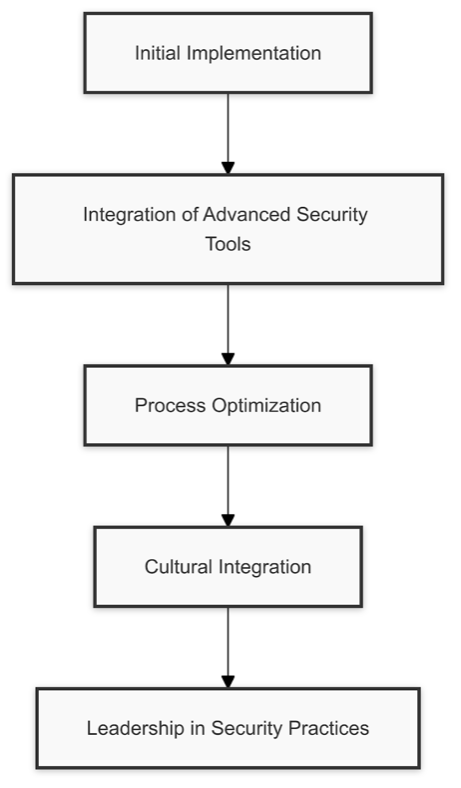
DevOps Security Integration Roadmap: This illustrates the path from initial implementation to advanced security leadership within DevOps practices.
We'd love to hear what you think. Ask a Question, Comment Below, and Stay Connected with Cisco Security on social!
 Hot Tags :
Cisco Partners
devops
Cloud Security
data security
DevSecOps
Hot Tags :
Cisco Partners
devops
Cloud Security
data security
DevSecOps